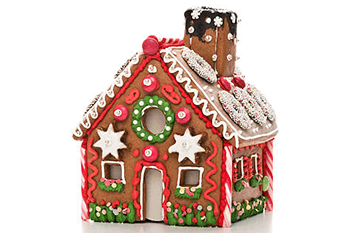Gingerbread has withstood the test of time. Many believe that gingerbread was first baked in Europe at the turn of the 11th century. Crusaders returning from the Middle East brought back the custom of spicy ginger baked into bread. The ginger not only enhanced the taste but also helped preserve the bread.
Ginger bread as we know it today emerged from medieval baking practices but the act of shaping the bread into various forms can be traced back to Franconia, Germany. “Lebkuchen” a sweet, baked treat resembling modern gingerbread was invented by monks baking in monasteries. Records of Lebkuchen bakers in Nuremberg can be traced as far back as 1395. To this day, Nuremberg is the number one exporter of Lebkuchen in the world!
In the early 1600’s, Nuremberg was awarded the title of “gingerbread capital of the world” when guilds began commissioning master bakers to make complicated works of art with the bread. Medieval bakers would carve intricate designs into the hard bread.
Gingerbread baking was so prestigious in Europe that by the 17th century only expert bakers were allowed to bake it. The only two exceptions were Christmas and Easter, when everyone was allowed to bake gingerbread.
The tradition of decorating model houses made out of gingerbread came about much more recently. Gingerbread houses began to emerge in 19th century Germany. Many believe that the invention of the gingerbread house can be accredited to one of Grimm’s famous fairy tales. Can you guess which one?
In “Hansel and Gretel,” two children abandoned in the forest come across an edible house made of bread and candy. Little do they know that the house is inhabited by an evil witch that plans to fatten them up and eat them.
Today, gingerbread houses have shed their grim origin and have become a prominent symbol of the Christmas holidays.
For more fun facts and candy news, make sure to keep up with our blog. Don’t forget to follow us on Facebook and Twitter!

